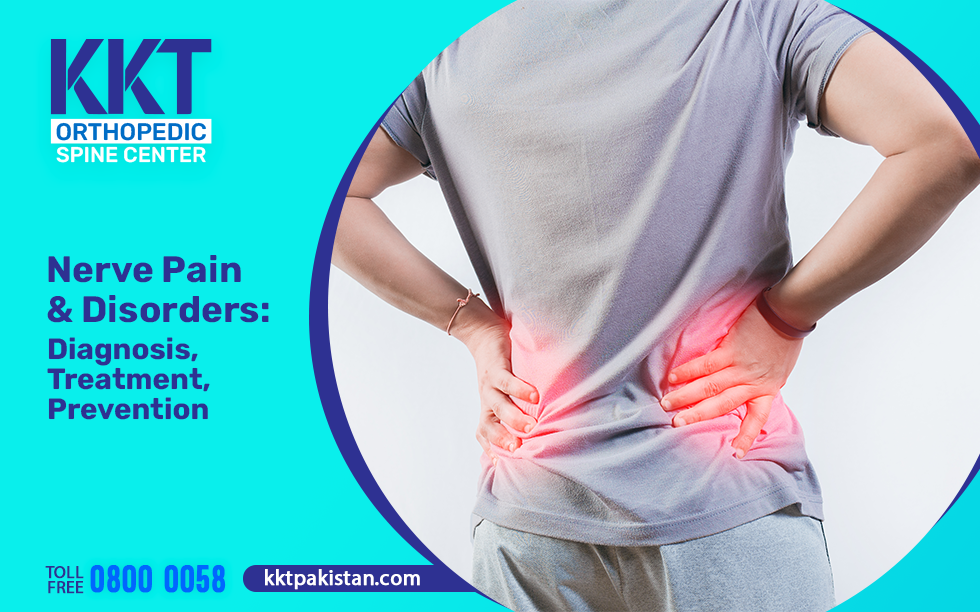Effective Sciatica Treatments: Relief for Nerve Pain and Discomfort
Sciatica is characterized by lower back or hip pain radiating down towards the legs.
It has become increasingly common, with an estimated 4 out of 10 people at risk of developing sciatica due to modern lifestyle habits.
A wide array of sciatica pain treatment are available, ranging from home remedies to surgical interventions. Sciatica can be classified into two categories: mild cases, which typically improve within a few weeks, and chronic sciatica, which persists for six months or longer.
Medications can provide instant relief from pain, while physiotherapy can help prevent the pain from recurring. Home remedies can also be effective in managing pain at home. Surgical interventions are considered a last resort; if your pain persists despite trying alternative methods, your doctor may recommend surgery.
Medications to Relieve Sciatica
Several over-the-counter medications serve as sciatica pain treatment and can be taken to relieve sciatica:
Pain Relievers: The oral medications include NSAIDs (ibuprofen, Advil, naproxen, Aleve, and ketoprofen).
Muscle Relaxants: Prescribed muscle relaxants help ease muscle spasms.
Nerve Pain Medications: Gabapentin and similar drugs are used for chronic sciatica.
Steroid Injections: A doctor might prescribe steroid injections when inflammation requires targeted treatment. These are injected around spinal nerves and are proven effective if the pain is caused by ruptured or herniated discs.
Immediate Relief for Sciatica Pain
If you are experiencing severe pain, you may seek a solution that provides instant relief. Over-the-counter medicines can often work like magic pills in these situations. Here are a few over-the-counter options that can help provide relief. Always remember to consult your doctor before taking any medication.
Over-the-counter (OTC) Pain Relievers
Ibuprofen helps to reduce inflammation and pain, while acetaminophen is effective for pain relief. Additionally, topical creams are applied directly to the skin. All of these options work well to alleviate sciatica pain. A person can take oral medication or use a topical cream, as both methods are equally effective for relieving mild pain.
Heat and Ice Therapy
Both heat and cold therapy are used to relieve pain, serving different purposes. Heat therapy is used to reduce inflammation and swelling due to injury, and cold therapy is used to relieve pain. You can switch between heat and cold therapy depending on the symptoms. For cold therapy, never apply ice directly on the skin; first, cover it with a cloth, similar to heat therapy. Both have been proven effective in relieving pain.
Gentle Stretches
Following two gentle stretches has proven effective in relieving sciatica pain.
Knee-to-chest exercise is performed by lying on your back and gently pulling your knees towards your chest. Hold for a moment and then release. This exercise increases flexibility and strengthens the lower back and leg muscles.
The Cat and Cow pose involves rounding your back toward the ceiling and arching your spine toward the ground. To perform this exercise, kneel down with your knees aligned directly under your hips and place your hands in front of your knees. Begin by arching your spine for the Cat pose, then lower your spine downwards into the Cow pose. This movement helps to stretch and mobilize your spine effectively.
Alternative Therapies
Acupuncture is a traditional Chinese practice where tiny stainless steel needles are inserted into specific points on the skin, and it is one of the preferable sciatica pain treatment procedures. This procedure helps relieve joint, back, neck, and sciatica pain. Chiropractic care involves applying pressure to adjust the spine. Massage therapy is a safe and effective method to relieve nerve pressure and alleviate mild pain.
Physiotherapy for Long-Term Relief
Bed rest is not advised as a primary sciatica pain treatment, but being active may be challenging if you have it. You may discover that some activities and positions are more comfortable than others for managing sciatica pain.
Your doctor may suggest physical therapy if your symptoms are not severe but continue for more than a few weeks. Sciatic discomfort lessens with the right exercises. To help stop the pain from returning, they also offer conditioning.
Depending on the cause of the sciatica, different exercises will be suggested. It is crucial to work with a professional experienced in treating sciatica, and it is also important to perform stretches and exercises precisely as instructed.
Home Remedies and Self-Care Tips
Engaging in simple stretches or staying active can lead to a pain-free life. Numerous home remedies and self-care tips can aid in combating sciatica pain and help you break free from discomfort.
Stretching and Yoga
The most effective way to deal with sciatica pain is to perform exercises that involve hip movement to ease nerve compression. Tightening muscles and pinched nerves can cause debilitating sciatica pain. Sciatica-specific exercises can remove tension and improve flexibility, ultimately reducing pain.
- Hamstring stretch
- Glute stretch
- Knee-to-opposite shoulder stretch
- Sitting spinal stretch
- Piriformis stretch
Posture Correction
Maintain proper posture at work and home. Switch to ergonomic furniture. Sitting for extended hours is good for nothing. It only excruciates sciatic pain.
- Take frequent breaks while sitting for long hours.
- Place a cushion behind your back to support the spine.
- Lift heavy weights with proper technique. Use your leg muscles, not your back muscles.
DIY Pain Management
Sciatica pain can make it challenging to walk even short distances. Fortunately, there are several self-help methods to help alleviate this pain.
- Use lumbar support cushions when sitting for extended periods.
- Apply heat pads to the areas experiencing pain.
- Take Epsom salt baths, as they help relieve pressure on the nerves.
Lifestyle Adjustments
The primary cause of sciatica is a herniated disc, which occurs due to excessive pressure on the discs in the spine. You can prevent this condition by making lifestyle adjustments such as incorporating a healthy lifestyle that includes nutritious eating habits, regular stretching, maintaining a healthy weight, and taking frequent breaks if you work for extended periods. Key strategies include:
- Staying active
- Maintaining a healthy weight
- Avoiding prolonged sitting
Integrating All Approaches
For mild sciatica pain, medications and physiotherapy can help alleviate discomfort. Home remedies, such as heat or cold therapy, and lifestyle changes can significantly reduce the pain. Maintaining a healthy diet and practicing good posture are also crucial for improving overall health. If the pain is chronic and does not improve with self-care measures, it is crucial to seek professional help. A qualified consultant can provide the advanced care needed to benefit your condition.
Advanced Treatment Options
Epidural Steroid Injections reduce inflammation and improve mobility. It can provide relief for up to three months.
Minimally Invasive Procedures: The treatment through Quantum Acoustic Waves is a minimally invasive procedure to treat sciatica.
Surgical Interventions: The decision to have surgery depends on the patient’s health, severity of pain, and dysfunction. There are two types of surgical interventions microdisectomy and laminectomy.
When to Seek Medical Attention
Seek medical advice if you have chronic sciatica and if it does not improve within a few weeks. You must seek medical attention if you experience the following signs.
- Severe pain in back and leg
- Loss of sensation
- Bladder incontinence
- Weight loss
- Sexual dysfunction
If you suffer from sciatica, please share your experience with us. Please let us know how you cope with the pain and which treatment worked for you.
To learn more about sciatica and its treatment, visit our experts at one of our centers, schedule an appointment, or dial 0800-00-558.
Frequently Asked Questions (FAQs):
What is the best medicine for sciatica?
The best medicine for sciatica depends on the severity of the condition and other symptoms. Pain relievers such as NSAIDS (ibuprofen, Advil, naproxen).
Can sciatica be cured with medicine?
Yes, sciatica can be treated with medicines. Usually, it heals on its own within a few days. If pain is debilitating, then it can reduced with over-the-counter medication.
Can a physiotherapist treat sciatica?
Physiotherapy has been proven effective in treating sciatica pain by reducing inflammation and relieving nerve compression.
What is the best physical therapy for sciatica pain?
Physical therapy for reducing sciatica pain includes stretches and exercises, glute stretches, cat and cow pose, piriformis stretches, and hamstring stretches to relieve pressure on the sciatic nerve.
What is the best practice for sciatica?
The best practice for sciatica is to stay active and do low-impact activities such as walking, performing exercises, and some stretches.
Is sciatica curable without surgery?
Yes, sciatica is curable without surgery. 90% of people with sciatica get better within a few weeks. In chronic cases, a doctor might suggest surgical procedures.
What is the quickest way to ease sciatica?
The quickest sciatica pain treatment is to apply a heat/ice pack on the area of pain.
Does sciatica heal on its own?
Yes, sciatica heals on its own. If the pain persists and worsens over time, you must seek professional help.
How can I permanently fix sciatica?
To prevent sciatica from recurring or permanently fix the pain, treat the root cause. Identify the lifestyle factors contributing to the issue and rectify those mistakes. Stay active, maintain correct posture, and perform exercises.






